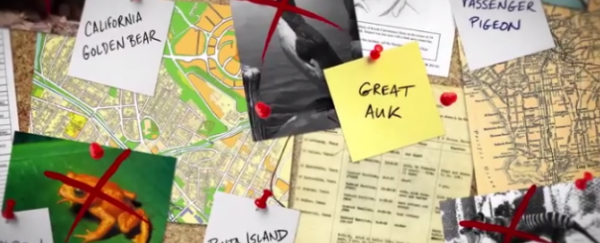
Extinction, as we know it, is a surprisingly new concept. In the 1790s, naturalist Georges Cuvier was the first to show that the fossils he'd been studying weren't from living, undiscovered creatures, but were actually from species long-dead. From then, scientists like Charles Darwin popularised the idea that extinction, like geology and evolution, was a natural process that the Earth goes through - just very, very, very slowly.
Just like you'd never actually see something evolve because it happens over thousands of years, you'd never actually see something go extinct, Darwin hypothesised.
Fast-forward to the 1980s when geologist Water Alverez was puzzled by the sudden disappearance of tiny aquatic fossils between two rock layers dated to around 66 million years ago. This happens to be the same age as the last dinosaurs, which Alverez went on to show had been wiped out along with 75 percent of the Earth's species because of an asteroid collision. Turns out extinctions can happen extremely fast and on an enormous scale, and when this happens, it's called a mass extinction.
In the history of life on Earth, says Joe Hansen in the latest episode of It's Okay To Be Smart, we know of five mass extinctions, when the majority of life on earth disappeared in the blink of a geologic eye. Of these, the End Permian, around 250 million years ago, was the mother of mass extinctions. Nicknamed 'The Great Dying', this event wiped out as many as 96 percent of the Earth's species.
And now, hundreds of millions of years after the last of the five mass extinctions, we're in the middle of the sixth. Sure, even when things are going pretty well on Earth, there's a background rate of extinction that sees some species naturally die out. But studies of current extinction rates show that we are 1,000 times over what's normal for mammals, and amphibians are disappearing 45,000 times faster than they should be. So how did we get here, and how do we know that we're to blame? Watch It's Okay To Be Smart above, to find out, and how you can get to know some of the world's less-loved but adorable-in-their-own-right endangered species.
Source: It's Okay To Be Smart
